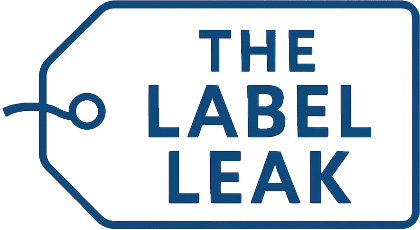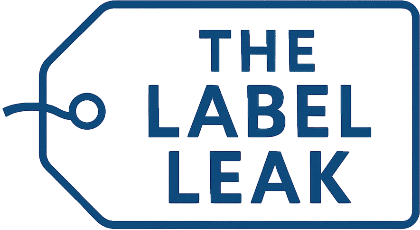Study: Over 15% of all retail returns in 2024 were fraudulent
Key Takeaways:
- In spite of significant investments in digital supply chain planning tools, most companies are not achieving the expected improvements in decision-making speed, cost reduction, or waste minimization.
- Rather than implementing broad, cookie cutter planning solutions, companies should focus on selecting and implementing only those modules that address their most pressing needs and that have a quick return on investment.
- Known as a “Value-Back Release Cadence,” this methodology can provide an accelerated value proposition and be deployed across a wide swath of industry sectors.
A new generation of advanced planning technologies has hit the market, promising real improvements in customer service and decision-making velocity while also cutting down on costs and waste. These promises are especially appealing at a time when accelerating supply and demand shocks are straining logistical networks worldwide and making supply chain resiliency a top concern for C-suite executives.
Many major planning tool providers like Kinaxis, o9, and Blue Yonder are moving beyond the traditional optimization capabilities they had begun introducing around two decades ago and are now building artificial intelligence (AI) capabilities within their platforms. With these innovations, the solutions can make better use of unstructured data and improve cross-functional collaboration, as well as provide AI-enabled decision support.
Given all of this, it is no surprise that so many leaders are looking to make larger investments in their planning tools. For example, in a recent survey of business leaders, we found that 84% intend to adopt AI-enabled planning capabilities within the next five years.
However, many business leaders are struggling with the challenge of how to best select and deploy this new generation of advanced-planning technologies. In theory, it should be easier for companies to identify and adopt these technologies—and to gain significant value from doing so. After all, the tools themselves are better than ever, with vastly expanded access to data and to AI-enabled capabilities. Additionally, these new products are increasingly pre-tailored to match the needs of specific industries and have been honed through several years of implementation.
The hard truth, however, is that in many cases these planning technologies have not generated the desired outcomes. Our own experience with clients indicates that about 70% to 75% of planning tool deployments fail, exceeding budget and schedule estimates and missing their benefit targets. Our research indicates that about $2.5 billion is spent annually on planning technologies, and that roughly $2 billion of that—$500 million per quarter—is wasted each year, or at least spent suboptimally.
Why do so many of these efforts fail to deliver on their promised value? We think it comes down to this: Organizations are deploying planning tool technologies that are misaligned to their actual needs. We believe the answer lies in a tighter focus on selecting and implementing (or “releasing”) only those planning modules that closely align with a company’s most pressing needs and that will quickly return value back to the operation. We have found that this approach—which we call a “Value-Back Release Cadence”—can provide an accelerated value proposition and be deployed across a wide swath of industry sectors.
No more cookie-cutter solutions
Why are so many companies deploying advanced planning tools that do not align with their needs? Quite often, it’s because the system integrator (SI) that they’ve hired to manage the whole process lacks sufficient understanding of the company’s specific needs and challenges. The SI often rolls out “cookie-cutter” solutions that fail to match the client’s unique profile and neglects to configure these solutions for variables like geographic region. Or they seek to simply automate current processes rather than develop new ones that might better serve the customer. Furthermore, SIs are often operating under incentives that have little to do with the client’s real interests. For example, SIs may seek to maximize fees and extend their implementation efforts for as long as possible as opposed to providing a quick return on investment.
The hard truth is that, in many cases, planning technologies have not generated the desired outcomes.
But clients have blind spots of their own too. When many clients start to think about improving their planning, they immediately jump to focusing on demand planning. However, in many cases, they have already reached their limit in terms of improving their forecast. The more impactful value levers are often in supply planning. For example, a client could spend millions of dollars in new forecasting tools, but if the demand for their products is very volatile, they may only see another percentage point gain in accuracy. The company would be better served by investing in the supply planning space.
The Value-Back Release Cadence approach can help companies pick the right tool because it focuses on selecting only the most useful modules of a planning tool and deploying them only in those areas of the organization where they are most needed.
For example, if a consumer-packaged goods company is failing to get the requisite value out of its inventory due to its inability to build a master production schedule (MPS), then the focus must be on that solution first—because there’s a good chance that an MPS will have a disproportionately positive effect on ROI. The company thus realizes the desired gains without having to spend additional resources on modules and services that are either unneeded or ancillary to the primary sources of improvement. In short, the company gets this “value back.” In our experience, by eliminating unnecessary modules, companies typically save 25% to 50% on their planning tool expenditure.
Value-Back Release Cadence also results in the substantially leaner timeframes for various stages of deployment. In a traditional process, technology selection typically takes two to three months; with Value-Back Release Cadence, selection takes one month. Similarly, such steps as blueprinting, configuration, and testing each take about half as long with Value-Back than with standard methodologies. In total, we have found that Value-Back Release Cadence can reduce time to implementation by 25% to 40%.
Narrowing the focus
To ensure that software selection and deployment are tightly focused, companies should ask themselves two questions:
1) Which planning function—demand planning or supply planning—or even sub-function is mission critical to address planning concerns? For example, if the primary driver of poor service levels is an inability to obtain supply commitments from your suppliers, a supplier collaboration-related tool should be investigated.
2) At what level or scale does the solution need to be deployed to be effective? For example, does it need to be deployed across the full global enterprise or only in regional business units?
Once they’ve determined the answers to those questions, companies that want to spend less on and gain extra value from their planning tools should focus on the following elements:
- Alignment on the primary planning challenges: Be clear on the business problems you are trying to solve; which part of the business requires the solution; and how planning can help solve the issue.
- Pragmatic and minimalistic technology selection: Choose only the specific tools needed to solve your business problems, avoiding one-size-fits-all or overly complex solutions.
- Targeted release windows: Use six-month design and deployment cycles to address the most critical planning challenges in a specific market or region.
In addition to these focus areas, companies need to make sure they have the right people in place both internally and externally. Internally, they need tech-savvy planners and implementers who understand and embrace advanced planning tools and have the expertise to adopt them effectively. Additionally, they need to ensure they are working with an accountable implementation partner, one that does not just show up to configure the tool but also participates fully in other vital steps of the process, such as design, data integration, and user training.
Let’s look at a real-life example of a leading consumer products manufacturer that had not made any material investments in planning in over a decade. The company was facing millions in lost sales due to service challenges. Two root causes were identified: limited demand visibility beyond three to six months and immature production scheduling. Using a Value-Back Release Cadence approach, the team focused on these two areas by rapidly deploying advanced forecasting and master production scheduling technologies. The first release related to forecasting, and the second master production scheduling. This approach quickly put the right tools in the planners’ hands to enabling them to rectify and prevent future service issues. In contrast to the organization’s historical tendency to over-customize solutions—often extending timelines by adding unnecessary features—this focused, value-back approach accelerated time to value and avoided implementation bloat.
Gaining greater clarity
In the past, companies trying to transform their supply chain planning capabilities may have lacked clarity on the primary sources of potential value that could be unlocked, or on the planning challenges to be solved. They might have been unclear on the specific tools or modules that could be deployed to solve those issues. Their past efforts may have been fraught with excessively long technology-development timelines or realized disappointingly low ROI.
Taking a Value-Back Release Cadence approach can help these companies identify, design, and implement targeted interventions enabled by digital technologies, and achieve measurable value within a single year of deployment—unlocking real value across the organization.
About the Authors
Jesse Chafin (Jesse.Chafin@Kearney.com) and Arun Kochar (Arun.Kochar@Kearney.com) are partners in management consulting firm Kearney’s Strategic Operations Practice, P.S. Subramaniam (Subramaniam.P.S@kearney.com) is a partner in the firm’s Communications Media & Technology Practice, and Padma Dwivedi (Padma.Dwivedi@kearney.com) is a manager in the firm’s Digital & Analytics Practice.


